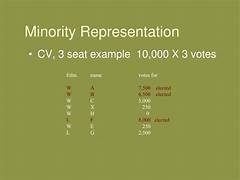The Evolution of Minority Representation in Congress
The United States Congress, as the legislative branch of the federal government, has long been a reflection of the nation’s evolving political and social dynamics. Minority representation in Congress has undergone significant transformation since the country’s founding. This evolution underscores broader societal changes, challenges, and progress in the fight for equality and inclusion.
Early Years: Limited Access and Barriers
When the U.S. Constitution was ratified in 1789, the political system largely excluded minorities. Voting rights were restricted to property-owning white men, effectively barring African Americans, Native Americans, and women from participating in the democratic process. Consequently, early Congresses were entirely composed of white male landowners, reflecting the discriminatory structures of the time.
Despite these barriers, a few exceptions emerged. Joseph Rainey, an African American, was elected to the House of Representatives in 1870 during the Reconstruction era. Hiram Revels, also African American, became the first minority U.S. Senator in the same year. These breakthroughs occurred in the wake of the Civil War and the abolition of slavery, marking a brief period of progress. However, the rise of Jim Crow laws and voter suppression tactics in the late 19th century significantly curtailed African American political participation.
The Civil Rights Movement and Increased Participation
The mid-20th century saw the resurgence of minority representation, largely driven by the Civil Rights Movement. Landmark legislation such as the Civil Rights Act of 1964 and the Voting Rights Act of 1965 dismantled many legal barriers to voting and political participation for African Americans and other minorities.
Shirley Chisholm’s election to the House in 1968 was a significant milestone. As the first African American woman elected to Congress, Chisholm’s leadership and advocacy paved the way for greater minority and female representation. Her slogan, “Unbought and Unbossed,” symbolized the fight for independence and equity in American politics.
Modern Era: Diversity and Milestones
Over the past few decades, the composition of Congress has become increasingly diverse. This change reflects the growing recognition of the importance of minority voices in policymaking and the success of grassroots movements aimed at expanding access to political power.
African American Representation
The Congressional Black Caucus (CBC), established in 1971, has been a cornerstone for African American lawmakers advocating for racial and economic justice. Notable figures such as John Lewis, Elijah Cummings, and Maxine Waters have played pivotal roles in shaping legislative priorities and addressing systemic inequalities.
Latino Representation
Latino representation has also grown significantly, fueled by demographic changes and increasing political engagement within Hispanic communities. In 1961, Henry B. González became the first Mexican American elected to the House. Today, the Congressional Hispanic Caucus (CHC) champions issues such as immigration reform, labor rights, and education.
Asian American and Pacific Islander Representation
Asian Americans and Pacific Islanders (AAPI) have similarly seen increased representation. Patsy Mink of Hawaii became the first woman of color and the first Asian American woman elected to Congress in 1965. Her advocacy for gender equality and education reform set a precedent for future leaders within the AAPI community.
Native American Representation
Native Americans have also made strides in achieving representation. Deb Haaland and Sharice Davids—elected in 2018—became the first Native American women to serve in Congress. Their elections marked a historic moment, highlighting the importance of indigenous perspectives in federal policymaking.
Challenges and Ongoing Struggles
While progress has been significant, challenges remain in ensuring equitable representation. Gerrymandering, voter suppression, and systemic racism continue to disproportionately impact minority communities. Additionally, the underrepresentation of certain groups, such as Native Hawaiians and other Pacific Islanders, reflects the need for continued advocacy and reform.
Moreover, intersectionality—the interconnected nature of social categorizations such as race, gender, and class—presents unique challenges for minority lawmakers. Women of color, for instance, often face both racial and gender-based discrimination, compounding the difficulties they encounter in navigating political spaces.
The Role of Representation
Representation matters because it ensures that diverse perspectives are included in the legislative process. Minority lawmakers often bring firsthand experiences with systemic inequities, enabling them to advocate effectively for policies that promote equity and justice. Their presence also inspires future generations to engage in civic life and strive for leadership roles.
Looking Ahead: A More Inclusive Future
The future of minority representation in Congress depends on sustained efforts to address structural barriers and encourage political participation among underrepresented communities. Key strategies include:
- Expanding Voter Access: Ensuring that voting rights are protected and accessible to all citizens, particularly in marginalized communities.
- Promoting Leadership Development: Investing in programs that train and support minority candidates for political office.
- Combating Discrimination: Enforcing anti-discrimination laws and promoting inclusive policies within political institutions.
- Building Coalitions: Encouraging collaboration across diverse groups to amplify marginalized voices and advocate for shared goals.
Conclusion
The evolution of minority representation in Congress reflects the broader journey of the United States toward a more inclusive democracy. While significant progress has been made, the journey is far from complete. By continuing to address systemic barriers and champion diversity, the nation can move closer to realizing the ideal of a government that truly represents all its people.


